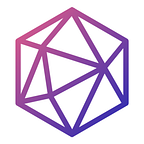How do we see The Graph protocol and subgraphs evolving in the future
From the perspectives of software engineers working in the company related to cryptocurrency and blockchain technology, we can clearly see the growing demand for services provided by The Graph protocol and subgraphs. There is no doubt that more and more complex DApps and decentralized products need to query from subgraphs to gather the on-chain data in a well ordered and filtered form.
The demand for obtaining blockchain data is changing. In 2017, the most active events on Ethereum were minting, distributing, sending and trading ERC-20 based tokens. At that time, we felt that explorers like Etherscan, and some simple centralized APIs could fulfill most of the projects. Then, some simple DApps appeared in the market provided decentralized gambling, digital pets and etc. The existing explorers and APIs that focused on transactions became insufficient to track these functional calls. This year, one of the hottest topics is DeFi. Comparing to the initiatives like MarkerDAO, now we have more complicated projects and protocols. DeFi is not only minting and staking, but also contains decentralized swap, AMM strategies, liquidity pools, and so on. Obviously, there are and will be the growing demands for acquiring data of these products in a decentralized, stable and well-organized way, and The Graph is the best solution.
There are a lot of projects that decide to distribute tokens by airdrop to the users with specific conditions. For instance, a team would like to find the most active and proficient DeFi users as their airdrop receivers, since they can start to use the new program and participate in the DAO events quickly. The standards might like follows.
1. Participated in SUSHI Governance
2. Participated in Yearn.Finance Governance
3. Participated in Yam Governance
4. Provided liquidity for at least 2 pools on Uniswap
Without The Graph protocol and the related subgraphs, the team might need to crawl, store, clean and sort the whole Ethereum data by themselves. That definitely takes a lot of time and cost to achieve this one-time query. Fortunately, we have The Graph protocol and subgraphs, all we need to do is just send one query to the subgraph indexer. That is it, done, we can receive the result in one moment. It is the reality, there are many projects that are using The Graph protocol, because it provides flexible and stable data at a reasonable cost. Therefore, no matter which topic will become the next popular one, The Graph protocol will get benefits from the growing crypto market and blockchain technologies.
In addition, the most attractive thing in The Graph protocol is everyone with different backgrounds can participate. Unlike other products and projects require solid tech-background or a large amount of fund to cover gas fees, the different characters including indexer and curator provide the possibility that let users with various specialties contribute to the ecosystem.
Overall, The Graph protocol is already a necessary element of current decentralized products. With the contributions from the users with different background, and the increasing trend of the crypto market, The Graph will become more and more important in the future.
